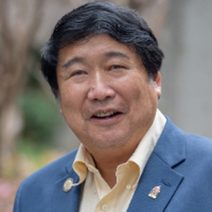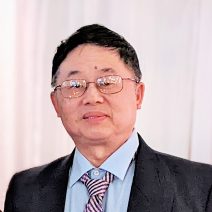2023 Awardees
Six early-stage research projects that seek to expand the boundaries of integrative healthcare have been awarded UCI Susan Samueli Integrative Health Institute Pilot Program grants for 2023.
Projects were selected based on their potential to transform medicine by generating new insights into the mechanistic basis of integrative therapies or producing evidence of their clinical outcomes. Each study demonstrated a clear evolution towards novel, relevant, and untested research areas. Recipients receive a one-year award of $25,000.
The institute partners with the UCI Institute for Clinical and Translational Science on the award, participating in a national Clinical Translational Science Awards External Reviewer Exchange Consortium (CEREC), to provide a fair scientific review process and better match applicants with feedback from experts in their respective fields.
Congratulations to the following teams and individuals.
Use of ancient medicinal plant rosemary to combat psychostimulant addiction
Substance abuse is a critical problem that shows no signs of abating. While opioid drugs, principally synthetic opioids have received the bulk of national attention, overdose deaths from psychostimulants such as cocaine and methamphetamine have also spiked in recent years. Unfortunately, there are no effective treatments for psychostimulant addiction or psychostimulant overdoses. With little investment from Big Pharma in treatments for substance-use disorders, alternative approaches are needed. Botanical medicines offer an ideal alternative, as they are widely available, inexpensive, and have a variety of beneficial health effects. Furthermore, while botanical medicines are used by over 80% of the world as a critical source of medicine, the mechanisms by which these medicines act are largely unknown, meaning that they have substantial untapped potential. Our collaborator recently identified several compounds from rosemary extract that can act on voltage-sensitive potassium channels (KCNQ) that in turn have beneficial health effects, e.g., through relaxing blood vessels. One of these is carnosic acid, which shows selective activation of KCNQ3/5 channels. Importantly, this is the first small molecule identified to have this selectivity. Crucially, my lab recently discovered that only a specific pathway in the brain, one that regulates cocaine addiction, expresses KCNQ3/5 channels, and furthermore, that carnosic acid administration prevents addiction-related behaviors. In this project, we will test whether other components of rosemary extract, as well as the whole extract itself, have similar anti-addiction effects. We will also perform mechanistic studies to test whether carnosic acid does in fact mediate its anti-addiction effects through KCNQ3/5 channels expressed in the brain cells of interest. These studies will unambiguously define the mechanism of action by which carnosic acid exerts its anti-addiction effects and identify the potential for botanical medicines to treat psychostimulant abuse.
Electroacupuncture in Symptom Management after CRS/HIPEC: A Pilot Study
Cytoreductive surgery (CRS) and hyperthermic intraperitoneal chemotherapy (HIPEC) is associated with the potential of long-term durable survival in patients with peritoneal metastases from appendiceal tumors. Patients can experience a variety of symptoms both related to their disease and also after undergoing CRS/HIPEC. Supportive interventions to improve quality of life in patients with gastrointestinal cancers have been shown to be associated with outcomes. Integrative oncology techniques, such as the use of electroacupuncture (EA), are associated with improvement of a wide array of symptomatology, both in the perioperative period and survivorship settings. Therefore, we propose a single-arm, prospective pilot study to assess for the feasibility of utilizing electroacupuncture in patients with peritoneal metastases from appendiceal tumors who have undergone CRS/HIPEC. Our team consists of clinicians and researchers who are both experienced in conducting supportive care clinical trials in cancer patients as well as integrative health and oncology. This will continue ongoing collaborative endeavors between the UCI Chao Family Comprehensive Cancer Center and the Susan Samueli Integrative Health Institute (SSIHI). Results will provide insights and preliminary data to support a large-scale clinical trial proposal to evaluate the efficacy of EA in mitigating post-operative symptomatology in patients undergoing CRS/HIPEC, and therefore improving quality of life.
Investigating the role of Bifidobacterium diversity on fiber degradation for development of multi-strain probiotics
High-fiber diets, such as those rich in fruits, vegetables, and whole grains are associated with lower risks of cardiovascular disease, cancer, diabetes, and overall mortality. Fermentation of fiber by gut microorganisms produces short-chain fatty acids (SCFAs), chemicals that have anti-inflammatory and anticarcinogenic effects and in general help to maintain gut barrier health. In addition to recommending a fiber-rich diet, health outcomes might be further improved by the introduction of microorganisms (probiotics) and/or the consumption of particular fibers (prebiotics). Indeed, the gut microbiomes of healthy adults in industrialized countries seem to be relatively limited by their genomic potential, suggesting that the deliberate introduction of fiber-consuming microbes could improve the fermentative capacity of an individual’s gut. Tapping into this potential, however, requires an understanding of how particular bacteria, combined with the chemistry of various fiber types, leads to overall rates of fiber degradation and the resulting metabolic products. In this project, we focus on the diversity of one group of bacteria, Bifidobacterium, that excel at degrading and fermenting fiber. Healthy adults generally carry
multiple species (and strains within species) of Bifidobacterium at any one time, and these strains are known to specialize on different fiber types. This evidence suggests that fiber degradation (and potentially, its impacts on the gut) will be influenced by Bifidobacterium diversity. Despite this, commercially available probiotics tend to include only one strain at a time. To test the effects of Bifidobacterium diversity on fiber degradation, we will apply a newly developed method that uses fiber-coated glass beads to quantify the degradation of one fiber at
a time within a resource rich medium like the human gut. Collectively, the research will lay the groundwork for developing multi-strain probiotics for use in combination with whole fiber interventions.
Feasibility and preliminary effects of fasting-mimicking diet in Asian Americans with prediabetes
Asian Americans are at increased risk for type 2 diabetes mellitus (T2DM) and prediabetes compared to non-Hispanic white individuals. Many cases of prediabetes can be reversible with lifestyle modifications, thus preventing T2DM. However, lifestyle interventions have been under-studied in Asian Americans. Fasting-mimicking diet (FMD) is a dietary approach in which people eat a specifically formulated, calorie-restricted package of food for 5 days followed by their usual diet. FMD “tricks” your body into thinking that it is fasting, thus gaining the physiological benefits of fasting, without entirely going without food. Periodic FMD, or undergoing FMD once a month for several months, has been shown to decrease body weight, waist circumference, blood pressure, and LDL cholesterol in healthy individuals. Given the higher risk for T2DM in Asian Americans, our longer-term goal is to test the short- and long-term effects of periodic FMD in Asian Americans with prediabetes. However, previous FMD trials have not included many Asian Americans, and studies have shown that Asian Americans are often less willing to participate in research. Thus, it is first needed to test the feasibility and acceptability of periodic FMD in Asian Americans and develop strategies to optimize study recruitment and adherence. In this pilot study, we will 1) Assess attitudes among Asian Americans with prediabetes about participating in an FMD trial and develop strategies to optimize study recruitment and adherence; 2) Determine rates of recruitment and adherence in a pilot FMD trial in Asian Americans with prediabetes and assess willingness to participate in a longer-term trial; and 3) Explore potential changes in body weight and other measures after one cycle of FMD. Completion of these aims will enable our study team to optimize the design of a full periodic FMD trial in Asian Americans with prediabetes.
Priming breast cancer surgical patients for success with high fiber diets to promote microbiome and immune health
A high-fiber diet has been associated with a more diverse and beneficial gut microbiome, which may enhance the immune response and improve treatment outcomes in cancer patients. Fiber intake may be critical for protecting the microbiome community resilience during pharmaceutical interventions such as cancer or antibiotic therapy. However, a typical U.S. diet includes about ~15 grams of fiber per day, less than half the daily recommended allowance. This study aims to investigate whether increasing fiber intake in breast cancer patients through dietary counseling or provided meals is more feasible and whether establishing higher fiber consumption two weeks before the start of treatment primes the microbiome and immune system for a more robust response to therapy. The study will involve 30 breast cancer survivors from UCI, who will be randomly assigned to receive either provided meals or dietary counseling to increase their fiber intake to 20-40 grams per day. Fecal samples will be collected at baseline and following the intervention to determine changes in the microbiome associated with fiber intake and improved immune response. The study’s significance lies in the fact that a high-fiber diet is a simple, safe, and cost-effective way to enhance the immune response and improve treatment outcomes in cancer patients, and the study will provide important insights into the feasibility and efficacy of increasing fiber intake through provided meals or dietary counseling.
Mechanisms underlying the effects of electroacupuncture on neuroinflammation and hypertension
Hypertension (HTN), also known as high blood pressure, is a common risk factor for heart disease and affects many people in the U.S. Despite the availability of medications, more than half of patients with HTN still have high blood pressure, so researchers are looking for new treatments. Recent studies suggest that electroacupuncture (EA), a type of acupuncture, can lower blood pressure by reducing inflammation and activity in the nervous system. However, the exact way that EA works to lower blood pressure is not fully understood. This study will investigate how EA works in rats with high blood pressure by examining the function of microglial cells and the activity of neurons in a part of the brain called the rostral ventrolateral medulla (rVLM). The study will also explore how EA affects the way that microglia and neurons
communicate with each other in hypertension. By understanding how electroacupuncture works, researchers hope to develop new treatments for high blood pressure.















